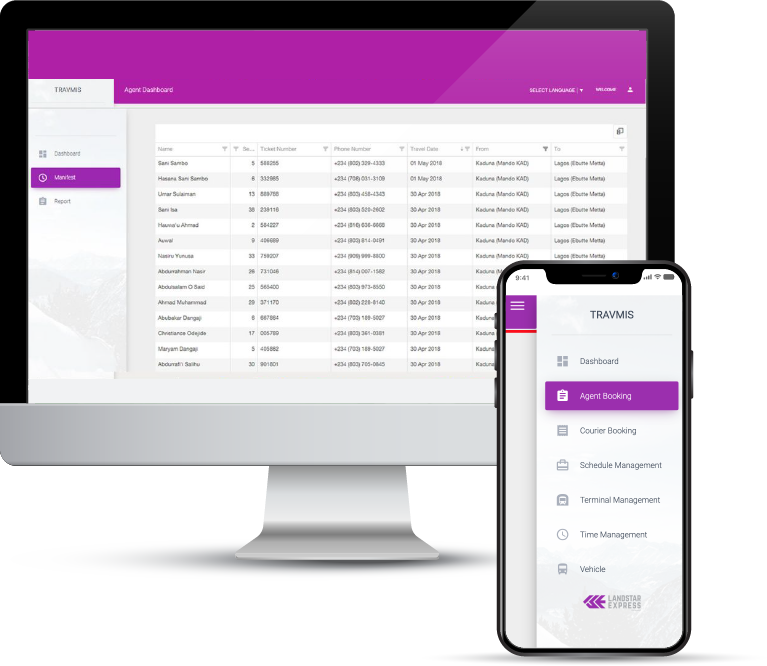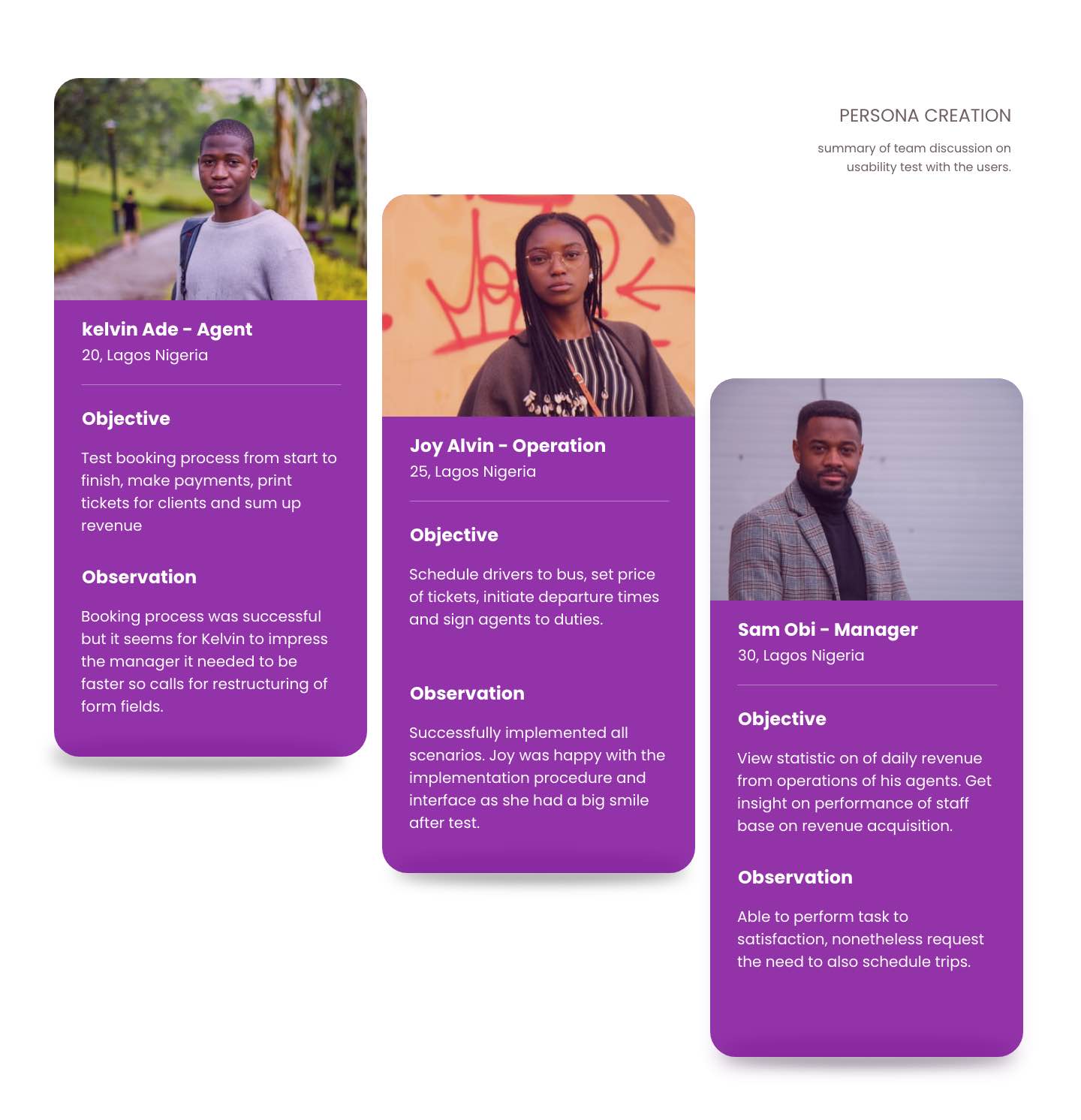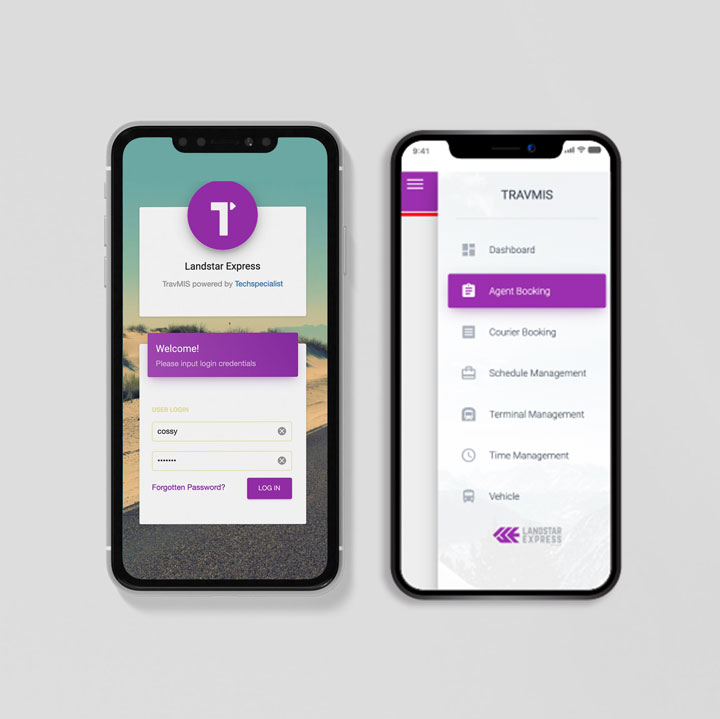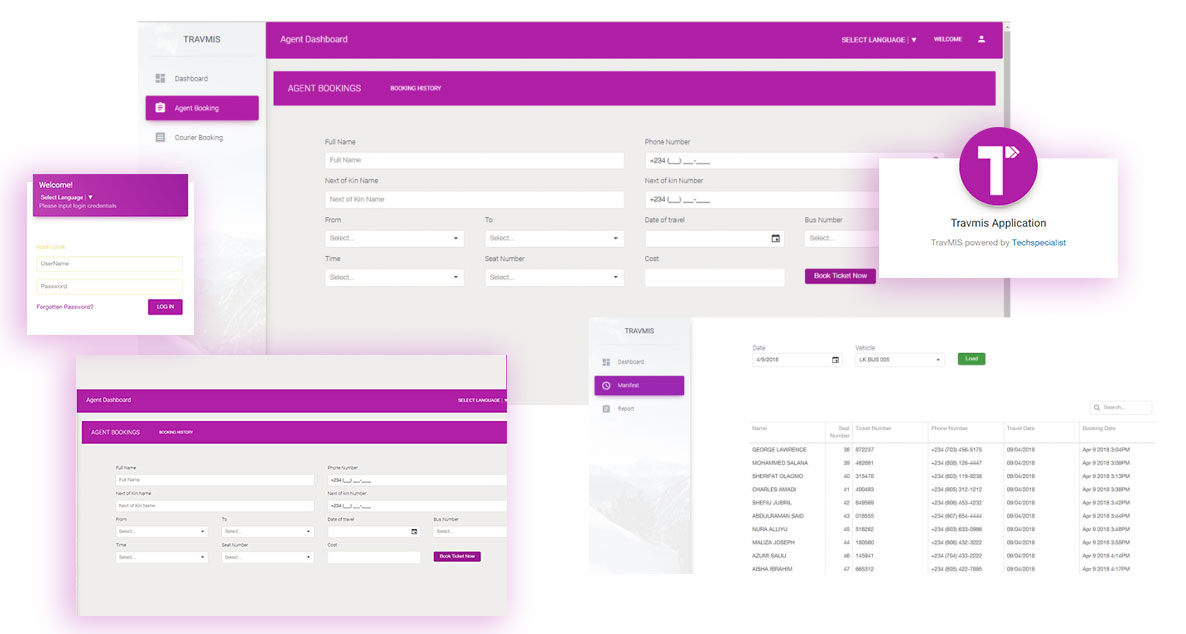Design Process
Front-end design for TravMis

ROLE
Front-end Design
CLIENT
TravMis Booking App
PLATFORMS
Mobile
Web
YEAR
2019
Case Study
TravMis is a transport service booking application owned by Techspecialist Consulting Limited. The platform will be able to supercharge transport booking procedures in Nigeria with less admin, more bookings, and happier customers.
Problem
The client wants to develop a SAAS application that will reduce the time taking to make bookings and payment for transport organizations. The platform should is to also give visibility to the daily operations of agents, users as well as revenue that comes in.
Goal
1. Increase bookings and reduce the time to get paid.
2. Automatically track and chase deposits and balances.
3. Take payments online or via traditional methods.
4. Record all invoices and payments and easily sync with your accounting systems.
Research
Understanding the process
The team carried out extensive online research on the competitor’s booking application within Nigeria exploring loopholes to improve and implement. Research shows that there are difficulties and frustrations experienced by agents without access to the internet.
Analyses
Based on research carried out, we analyse the process that is required to make a secured reservation and payment. We subsequently established 3 sectors that are critical to the implementation of the design goal.
Sector Brief
Agent Management
Agents are able to ease booking process by automating all reservation tasks: show up-to-date availability and immediate price quotations, ask for any information on the booking form, handle cancellations, modifications and set up automatic confirmations.
Reports & statistics
This dashboard will provide managers with a wide variety of reports which can also be exported for better analysis. Activity statistics provide you with up-to-date important business analytics on your operation. TravMis integrates with Google Analytics.
Operatins Management
The Schedule optimizer dashboards enable managers can to create optimal routes and shifts for drivers while at the same time taking into account numerous restrictions, such as travel times and distances between all locations taking into account speeds, vehicle types and expected traffic congestion
User Persona
Using a User-Centered approach, we tested our sector brief with three personas representing the different sectors of the dashboards: Agents, Operations, Managers.
Challenge
Synchronization of all dashboard and load time was a concern as many agents can be on the system at a time
Solution
I designed the front-end using a single page application approach (SAP), whereby the user only needs to load the dashboard ones and all resource are stored on the browse, making data synch necessary only when needed for insight.
Visual Design
Following a style guide agreed by team members, I design the front-end web interfaces through a mobile-first approach (Start my design focusing on mobile users first than optimizing for web).



